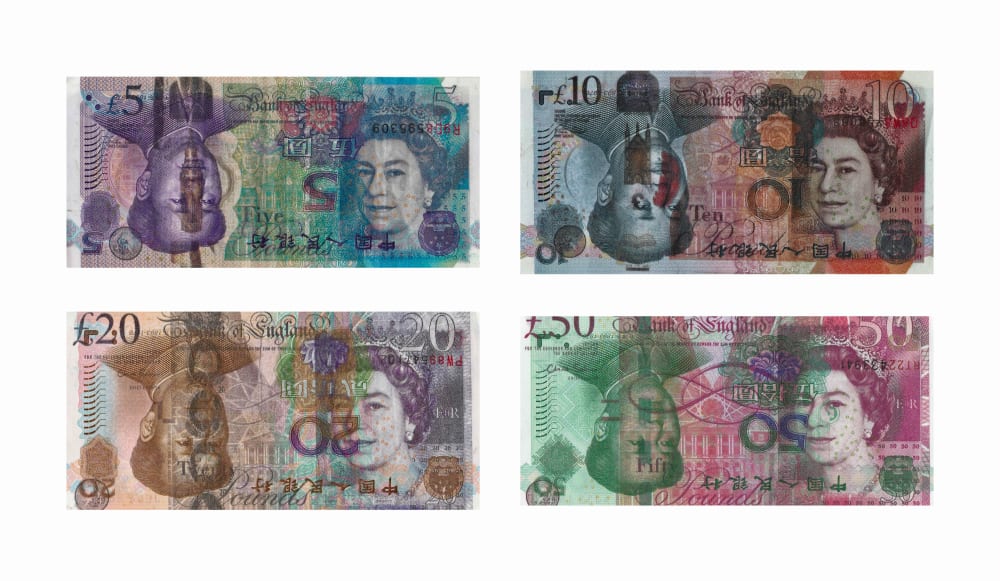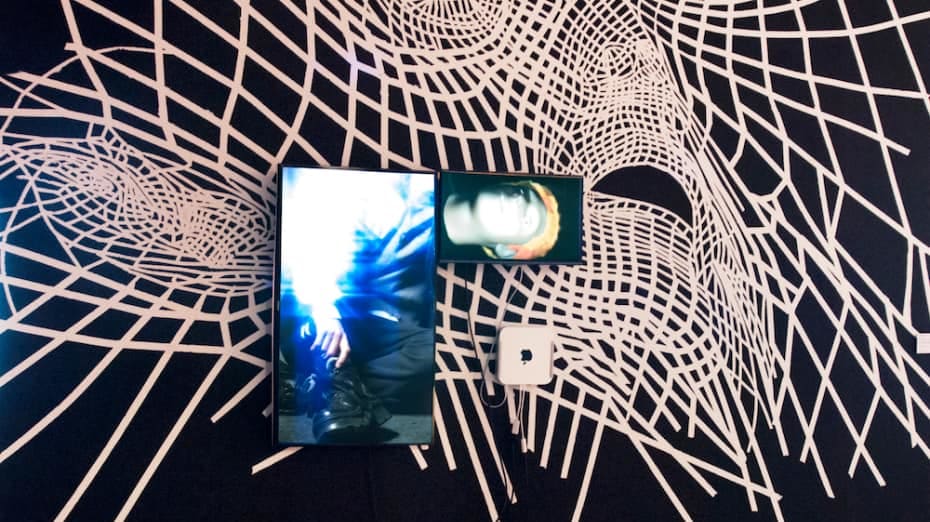We join the dots in Show One: Art by looking at work that uses data as a starting point to makes the invisible, visible
There’s an installation in Show One: Art that offers visitors a place to hide. By making visible the sightlines of a part-private, part-public space, Jacob Hulmston (BA Fine Art) gives us the opportunity to become invisible.
He started his degree interested in data, focused on interfaces – be they commercial, government or military – and disrupting them to reveal something. “For four years I was working with data but I never really understood what it was I was trying to unpick,” Hulmston explains, “or why it was important for me. Around the time of my dissertation, I took these concerns regarding omnipresent systems, along with this idea of a 'machinic assemblage', and began thinking about how queerness exists within them, and what terms like 'queer data' might mean. The past year I’ve been trying to really investigate what that is.”
Looking at surveillance, Hulmston was fascinated by claims reported that Stanford University researchers created an algorithm that could guess, with 91% accuracy, whether people are gay or straight using simply facial recognition. Match that with growing anti-LGBT+ laws passing in counties such as Brunei and the fine art student found a concerning crossing point between queer identity and data surveillance. In this crossing point, the human body is reduced to quantitative data and somehow the body unknowingly becomes part of the machine. Hulmston describes his final project as partly “an anxious response to the potential extraction and use of queer data.”

The result, Gaze, is an installation which highlights the experience of visibility and invisibility in public, a moment of disruption for a city in which everyday life reflects more and more Bentham’s panopticon. Gaze shows how under surveillance, privacy becomes a privilege. The installation itself is entirely bespoke, made for the negotiated threshold space in which it sits: “I’ve been thinking about borders, the distinctions between public and private and the murky muddle that happens in-between. It’s not a critique necessarily, but a recognition that it exists because these boundaries are completely invisible.” By highlighting where we can be hidden, Hulmston remakes our everyday space as conflicted and even hostile. The installation is, appropriately, hidden from visitors when they first enter the exhibition space.
Data is a subject in which both the political and the personal, the abstract and concrete co-exist. MA Fine Art student Fei Li explores cultural exchange in his work, having moved from China to the UK to study: “I saw lots of misunderstanding about the different cultures. I think many international students have strong feelings about this.”

Li’s previous experience in the marketing department of a big data company sparked his interested in what data can mean. So, with Equivalent Exchange he transformed the exchange rate into music, using a financial mechanism to represent his own personal experience. His work embodies the transformation of capital from one currency to another – specifically the relationship between China and Europe, Russia, the UK and US – but it also reflects translation in the sense that he moves information from one medium to another. The experimental music that results tells the story of the exchange rate from 2010 to now. So, does he feel like the musician or the composer? “Yes, but I’m not. I have a long way to go.”
Alongside the experimental sounds, Li has digitally printed the designs of British banknotes onto genuine Chinese yuan banknotes. Overlaying language, cultural symbols as well as financial value, the objects become visual metaphors for commercial and cultural interaction but also his own experience.
While Hulmston and Li look to the machines and mechanisms that govern our daily lives, Grant Legassick, MA Photography, has turned his attention to selling art. Interested in the art market’s ability to regenerate itself, Legassick set about designing a process whereby the market creates the work of art. Having listed a painting on auction site Ebay, each bid triggers a digital paintbrush stroke on a digital canvas; the bidding within the auction creates the image. Once the auction has ended the bespoke image is printed (complete with provenance stamp) and sent to the owner.

It’s self-generated. It can trade itself, create itself and recommission itself forever.”
Grant Legassick
While Legassick isn’t lifting a paintbrush for the work, he is the artist at the centre of the performance: “Without me the painting wouldn’t exist. But at the same time, it’s almost like a symbiotic relationship – me, the machine, the code and the market are working together. It’s a human/digital collective.” As author, he defines the parameters of the final results with future plans including paintings that take on particular art historical aesthetics, for example Cubist or Mannerist, as well as reversing the process so that a painting begins the auction finished and undoes towards its blanks state with every bid.
It could be interpreted as a cynical ode to the marketplace. “It’s deeply cynical,” agrees Legassick, “and it’s very perverse. It’s made from data with no human emotion. It’s an infatuation with the system that has created it.” Legassick’s previous career as a photographer and visual effects artist may have been his introduction to digital production, but through his Master’s his process has turned on its head; no longer making the unreal look real but instead making manifest the invisible. “In our digital society, everything we do is basically an algorithm. It’s the invisible part of our daily lives but it has so much power of what we do. What’s interesting is taking this immateriality and materialising it.”
Both Jacob Hulmston and Fei Li have been nominated for the NOVA Awards this year. To see all the work mentioned here, visit Show One: Art, 22-26 May at Central Saint Martins.





